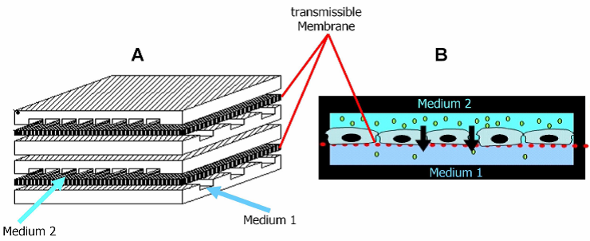Internationale Partnersuche
Innovation & Technologie Angebot
Micro fluidic system for simulating in vivo-equivalent cell barriers
Country of Origin: Germany
Reference Number: TODE20180816001
Publication Date: 31 August 2018
Summary
A German university of applied sciences has developed a micro fluidic barrier system, which is simulating the native in vivo situation as it occurs at cell barriers, e.g. when separating the cell compartments in two different milieus such as intestinal lumen and blood. The university is looking for exclusive or non-exclusive licensing for developing, production and distribution of the technology in United Kingdom or France; option agreements and further technical cooperation are possible.
Description
The German university is specialised in micro fluidic systems and carries out applied research in biological barrier systems.
In vivo like models are very important in the field of pharma- and medical research. They provide the ability to analyse complex relations under defined conditions. To simulate such barrier systems it is suitable to imitate the native conditions as they occur at cell barriers in vivo. For this reason it is necessary to simulate in vivo cell barriers, which are accessible both from the apical and the basolateral side. Static systems such as standard cell cultures (“Transwells”) provide only limited means.
The micro fluidic system is simulating the in vivo situation, where the cell barrier separates the compartments in two different milieus such as intestinal lumen and blood. The system comprises a container with one or more micro fluidic modules. Each module consists of two micro-structured polycarbonate (PC) sheets separated by a transmissible poly-carbonate membrane.
With this technology the internalised intestinal mucous membrane can be simulated under in vivo-equivalent conditions. Thus, the micro-fluidic system allows the mono- and/or co-cultivation of cells under extended continuous media flow conditions.
This system can be applied for the research on pharmaceutical compounds as well as preclinical tests. It is useful for simulating cell barriers like the blood-brain barrier or the lung mucosa as well as the intestinal mucosa. The system can be suitably used for testing the effects of biologically active substances or pharmaceuticals at cell barriers on both sides.
The university seeks to out-license the new technology to companies capable to further develop the technology towards a marketable product and to production. With the functional prototype as a starting point the university is ready to support technical development by a technical cooperation agreement or subcontracting.

Advantages and Innovations
• The system resembles the in vivo situation of cell barriers.
• The cell barrier is accessible both from the apical and the
basolateral side.
• Different cell types can be cultured on both sides of the
polycarbonate- membrane.
Stage Of Development
Prototype available for demonstration
Stage Of Development Comment
Functional prototype available.
Requested partner
An industrial partner is looked for, which should have technical expertise in micro fluidic technologies and should be interested in licensing, producing and marketing the new technology.
The role of the industrial partner is to identify the requirements of the market with the customer needs and to realise the corresponding further technical development, e.g. technical adaptions or functional extensions, manufacturing requirements etc.
The university of applied science as a cooperation partner offers its expertise to carry out supporting studies.
Dissemination Countries
France, United Kingdom
Cooperation offer ist closed for requests

